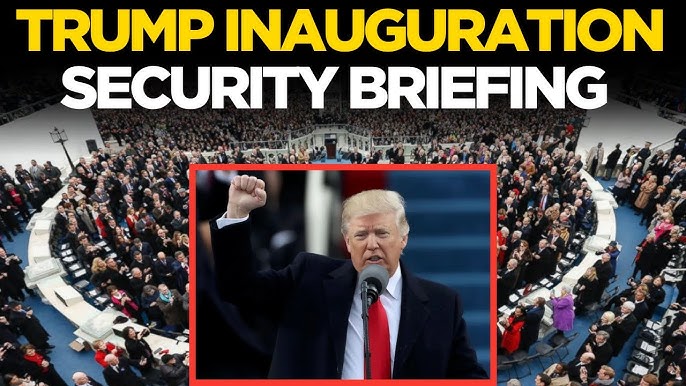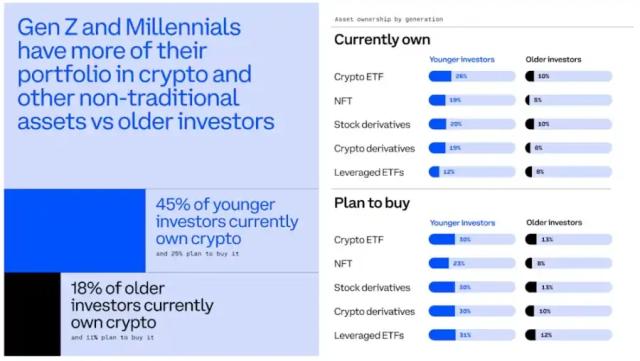
Just last night, Bitcoin fell below the $90,000 mark. Although it rebounded quickly after a brief dip, forming a classic 2B (two breakout) pattern, the prices of most Altcoins have not yet recovered to the pre-crash level, while BTC's market share has continued to rise. The market has once again entered a low liquidity, high volatility waiting stage. Undoubtedly, everyone is waiting for a key node - the inauguration of Trump.
There are voices in the market saying that the current fluctuation is the "last drop" before Trump takes office. The author also tends to this view. If the assumption is valid, then on the eve of the inauguration, when AI aesthetic fatigue is prevalent, where should we focus our attention?
What will happen on the day of Trump's inauguration?
On January 20, 2025, President-elect Trump will be sworn in on the west lawn of the Capitol, kicking off his new presidential term. The day's schedule will be packed, with security checkpoints opening at 6 a.m. and a large crowd of ticket holders expected to attend, creating a lively atmosphere. After the opening address at 11:30 a.m., Trump will officially be sworn in as President of the United States at noon and deliver his inaugural address. Based on past records, Trump's speaking style is concise and powerful, with his last inaugural address lasting only 17 minutes, but conveying many key signals. Immediately afterwards, he will hold a signing ceremony in the Oval Office, followed by a luncheon, a troop review, and a presidential parade.
However, this day is not only a symbolic ceremonial day, but may also become a catalyst for market sentiment. According to insiders, Trump plans to sign a series of executive orders within hours of being sworn in to quickly implement his policy agenda. These executive orders cover areas such as immigration, energy, federal workforce management, and regulatory reform, demonstrating his "immediate delivery of promises" style. The key measures are expected to include:
- Border policy: Tighten border restrictions, authorize the completion of the unfinished border wall, and establish a large-scale deportation mechanism.
- Immigration asylum policy: Deprive sanctuary cities of federal funding until they stop protecting undocumented immigrants.
- Federal employee reform: Freeze government hiring to reduce the number of federal employees, while also mandating that federal employees return to the office.
Trump had stated in a fundraising event on June 8 last year that he would become the "Crypto President", and Biden and Gensler's crackdown on cryptocurrencies will stop within an hour of Trump's second term taking office. Given that Gary Gensler has already announced his departure on January 20, the market will focus on the "first batch of executive orders" signed by Trump after the inauguration.
According to The Washington Post, Trump is expected to issue an executive order on the first day of his presidency, addressing the "de-banking" and repeal of controversial cryptocurrency accounting policies. In addition, the market still has expectations: Will there be more tax cut policies or regulatory relaxation? Will he reiterate his previous crypto commitments in the speech?
Past Commitments
During the 2024 election campaign, Trump changed his earlier critical attitude towards cryptocurrencies and frequently made statements supporting the crypto industry, proposing specific commitments on multiple occasions. These commitments not only shaped his image as the "Crypto President", but also sparked market expectations for a relaxation of crypto industry policies. Here are the details of the ten new crypto policy promises made by Trump:
- Make America the world's cryptocurrency capital: In a speech at the New York Economic Club on September 6, Trump clearly stated that he plans to turn the US into the global center for cryptocurrencies through deregulation and promoting domestic energy growth. He believes that "future industries" such as cryptocurrencies and AI are the core drivers of the US economic revival.
- Establish a strategic Bitcoin reserve: Trump proposed emulating the traditional national strategic reserve model to establish a "strategic Bitcoin reserve" to enhance the US's position in the global crypto market and provide innovative support for the US dollar credit system.
- Prevent the US from selling its held Bitcoin: Trump argues that the US government should retain the Bitcoin it holds rather than sell it for cash. He believes these assets should serve as strategic resources for national interests. The recent Bitcoin crash was partly due to the US Department of Justice being granted permission to dispose of the 69,370 Bitcoins seized in the famous Silk Road case. This selling pressure caused market panic. According to on-chain data, the US government has only transferred 19,800 Bitcoins to Coinbase so far, and if the rest are not moved to a CEX before Trump takes office, this selling pressure will disappear, turning a negative into a positive.
- Prevent the US from further developing CBDC: He is opposed to central bank digital currencies (CBDCs), believing they may infringe on personal privacy. He emphasizes that the US needs to protect user self-custody rights and resist policies that forcibly promote CBDC.
- Propose a comprehensive crypto policy: Trump has promised to develop a comprehensive crypto policy covering stablecoin regulation, Bitcoin self-custody rights, and support for the mining industry, ensuring policy transparency, operability, and providing a clear compliance framework for the industry.
- Stop the crackdown on cryptocurrencies within the first hour of taking office: Trump promised at a fundraising event that he will end Biden and the SEC's high-pressure policies on the crypto industry and stop the "crackdown" on the crypto industry within the first hour of taking office.
- Terminate the US's illegal suppression of the crypto industry: Trump criticized the Biden administration's law enforcement against the crypto industry as "illegal and un-American", and promised to terminate the malicious litigation and suppressive policies against crypto companies.
- Suggest using cryptocurrencies to solve the US debt problem: In an interview with Fox Business Channel, Trump made a highly controversial suggestion - using cryptocurrencies to help solve the US's $35 trillion national debt. He believes that assets like Bitcoin can become innovative tools for addressing debt issues.
- Reduce the sentence of Silk Road founder Ross Ulbricht: Trump stated that he will commute the sentence of Silk Road founder Ross Ulbricht after taking office, believing that the US should take a more tolerant attitude towards early explorers in the cryptocurrency field. Tips: The Meme coin named after Ross Ulbricht on Solana has quietly surpassed its previous high and currently has a market cap of $30 million, with the potential to surge again after Trump signs the sentence commutation order.
These commitments not only cover policy directions, but also reveal Trump's forward-looking thinking about the industry. He not only promises to end the high-pressure policies against the crypto industry, but also proposes the strategic reserve concept centered on Bitcoin. Based on these past commitments and the holdings of the Trump family's "crypto fund" World Liberty Fi, we can analyze three major trend tracks for the medium term: DeFi, RWA, and Meme.
DeFi: A Whole New Opportunity for Decentralized Finance
The most market-attractive of Trump's campaign promises is undoubtedly his signal of policy relaxation. If this promise is fulfilled, DeFi (Decentralized Finance) will undoubtedly be one of the biggest beneficiaries. Against the backdrop of market downturn caused by high-pressure regulation, DeFi is in need of a turning point, and Trump's policy direction may be able to inject new vitality into it.
DeFi, as a key application of blockchain technology, has shown the potential to reshape the traditional financial model since 2019. From decentralized exchanges to on-chain lending protocols, DeFi provides users with financial services that are transparent, efficient, and do not require intermediaries. However, the strong regulatory policies during the Biden administration have suppressed the activity of many DeFi protocols, and a large number of projects have chosen to shift their operational focus overseas. For example, protocols like Uniswap and Aave had to adopt legal avoidance strategies when facing enforcement threats from the SEC.
The Trump team has publicly stated multiple times that they will support technological innovation in the United States, especially in reducing the complexity of regulations. The representative organization of the crypto industry, Coin Center, pointed out that if Trump fulfills his promise to "end the crackdown on the crypto industry," the United States may once again become the ideal landing place for DeFi projects. Especially with Trump's plan to fire SEC Chairman Gensler, the market expects that the regulatory authorities may be more inclined to cooperate with the industry rather than confront it.
In terms of funding, the core stablecoin of DeFi has faced regulatory pressure during the Biden administration, but the attitude of the Trump government may be completely different. The Trump team mentioned in their policy plan that they will promote the minting and circulation of stablecoins in the United States to enhance the global competitiveness of the US dollar. This strategy is directly related to the construction of liquidity pools for DeFi protocols. Data shows that stablecoins like USDT and USDC currently occupy an important share of the DeFi ecosystem, and if they can receive policy-level support, the liquidity will be further enhanced. In addition, the change in US energy policy also indirectly supports the development of mining and the DeFi ecosystem. Trump's energy expansion plan may reduce electricity costs, injecting more sustainability into on-chain activities.
More importantly, the expectation of institutional capital entering the market is heating up. Goldman Sachs' latest report points out that the tokenization of on-chain bonds and real-world assets is becoming a new opportunity for DeFi development. If Trump further promotes the legalization of on-chain assets, it will open up new application scenarios for the DeFi industry. In the future, users may not only be able to obtain high returns on DeFi platforms, but also enjoy the security brought by the compliant environment by participating in on-chain government bonds and other traditional assets.
With Trump's plan to establish a cryptocurrency advisory committee and propose a comprehensive crypto policy, the US crypto industry may be ushering in a new golden age. DeFi, an ecosystem with the vision of decentralization and free finance, is expected to return to the industry's main stage under the promotion of Trump's policies.
RWA: Real-World Assets Tokenized on-Chain
In the potential policy changes under the Trump administration, the on-chain tokenization of real-world assets (RWA) may become another important track to drive innovation in the crypto industry. RWA represents the tokenization of real-world assets (such as bonds, real estate, commodities, etc.) on the blockchain, allowing these traditional assets to circulate and trade on-chain through smart contracts. This track is not only a new opportunity in the crypto field, but also provides a new growth driver for the traditional financial market.
The potential of RWA has gradually emerged in the past year. According to data from blockchain analytics company Dune, the on-chain bond market grew by 200% in 2024, particularly the tokenization of US Treasuries and corporate bonds, attracting a large amount of institutional capital. For example, Goldman Sachs' digital asset platform has piloted the issuance of on-chain bonds, while JPMorgan is using its Onyx platform to explore on-chain supply chain finance solutions. If the Trump administration fulfills its commitment to support crypto technology, the legalization of on-chain assets may further accelerate.
The Trump team has mentioned the core idea of "unleashing the economic potential of America" many times, proposing to stimulate technological innovation through tax cuts and reducing cumbersome regulatory barriers. This policy direction is highly consistent with the core logic of RWA. RWA provides the possibility of on-chain operations for traditional financial assets, making asset transactions more efficient and transparent, while also reducing intermediary costs. Especially against the backdrop of the high US fiscal deficit, the expansion of the on-chain bond market not only helps attract global capital, but also provides the government with more flexible debt management tools.
More notably, Trump proposed the concept of "on-chain US dollar debt" during his 2024 campaign. In an interview with Fox Business Channel, he stated that cryptocurrencies and blockchain technology are "very interesting tools" and hinted at using on-chain debt to provide a solution for the $35 trillion US national debt problem. This suggestion has sparked widespread discussion. Although the idea has not yet taken shape, the policy signal behind it indicates that the United States may further explore the strategic value of RWA under the leadership of the Trump administration.
The market's response has also been very positive. Data from RWA platforms Goldfinch and Centrifuge shows that on-chain real assets are attracting more and more non-crypto investors. With the expectation of policy benefits, the inflow of funds into areas such as on-chain collateralized lending, real estate tokenization, and private equity tokenization is expected to increase significantly. For institutional investors, RWA is not only a new asset class, but may also become a bridge for the deep integration of the traditional financial system and blockchain technology.
If Trump can fulfill his promises and provide support in terms of policies and regulations for RWA, the United States has the opportunity to seize the global lead in this field. The rise of the RWA track will not only empower the crypto industry, but also bring far-reaching impacts on improving the efficiency and innovation of the entire financial system.
Meme: The Atavistic Phenomenon After AI Aesthetic Fatigue
The AI Agent craze has been going on for months, from the initial amazement to the current saturation, both within and outside the industry seem to have felt a certain "fatigue". The once eye-catching technology demonstrations have now gradually lost their appeal in the wave of over-commercialization, even becoming tools for quick profit-seeking. Aesthetic fatigue is causing the market's attention to gradually shift from the AI theme to other more relaxed and emotionally driven tracks, and the Meme track is the biggest beneficiary.
SendAI founder Yash Agarwal directly criticized the current AI hype chaos in a recent article. He mentioned that the visit volume of the hackathon homepage was only 40,000 in the past week, while a low-innovation AI token can quickly reach a market cap of 500 million. Yash is disappointed with this phenomenon, directly stating that his platform was originally intended to promote the development of AI in the Solana ecosystem, but now it has become a "casino for the fallen." He believes that this short-sighted bubble will lead developers to the trap of quick profits, rather than the creation of long-term value, and may even lead the industry to a "crash-like disaster" in the not-too-distant future.
This view has been echoed by many crypto industry observers. Last night, the well-known crypto KOL Ansem stated on social media that "many farms with infinite APRs have eventually gone to zero, and many AI coins will also meet the same fate in the future. But in the next year, some truly solid protocols will still stand out and become the cornerstones of the on-chain economy, just like Aave, Uniswap and Chainlink did a few years ago." This rational and prudent attitude has undoubtedly injected a touch of sobriety into the current frenetic market.
Looking at the entire AI track, the ones that may have long-term value are likely to be the underlying infrastructure projects like a16z and Virtual, or industry leaders like AIXBT with innovative driving forces. But the vast majority of "skin-changing" low-innovation Agent projects going to zero is almost a foregone conclusion. The phenomenon of LLM easily reaching a market cap of 100 million further proves the current degree of market bubble. In the short term, as the AI track narrative gradually cools down, on-chain capital and attention may flow back to the purest Meme track. These projects, driven by their strong community and emotional dissemination, may once again become the focus of the market, until the AI narrative is truly upgraded from the architectural level.
The charm of the Meme track lies in the fact that it does not require complex technical logic, but can ignite market emotions through humor and resonance. The temporary fatigue of AI narratives may have provided an opportunity for this atavistic phenomenon, and the market's wind direction is quietly shifting, with on-chain Meme absolutely worth watching.
Summary
Trump's return is not only a major political event, but also opens a new chapter for the cryptocurrency industry. From Bitcoin strategic reserves to the termination of crackdowns on the cryptocurrency industry, his policy proposals will profoundly impact the future direction of the market.
DeFi will ride the wave of policy relaxation to regain its position as the center of innovation and capital influx, providing the financial market with more transparent and open choices; RWA may occupy a key position in the debt solution proposed by Trump, bringing about a deep integration of traditional finance and blockchain technology through on-chain assets. In the more relaxed Meme track, Trump's recognition of the crypto community culture will further release the market's emotions and imagination.
All of this is inseparable from the comprehensive crypto policy support that the Trump administration may adopt. Measures such as firing Gensler, reducing regulation, and establishing a cryptocurrency advisory committee demonstrate Trump's clear direction in the crypto industry layout. The effects of these policy statements have already begun to emerge, and if they can be further implemented step by step, the United States may once again become the global center of innovation in the crypto industry. The "east rise and west fall" pattern of the crypto industry over the past two years may be reversed, and the future of the crypto industry may usher in an even more brilliant chapter under Trump's leadership.
The market is holding its breath, waiting to see how this familiar yet controversial president will fulfill his promises. The inauguration ceremony on January 20th is not only Trump's return, but also an important turning point in the fate of the entire crypto industry. Going forward, every move in the crypto market will be closely linked to Trump's policy decisions.








